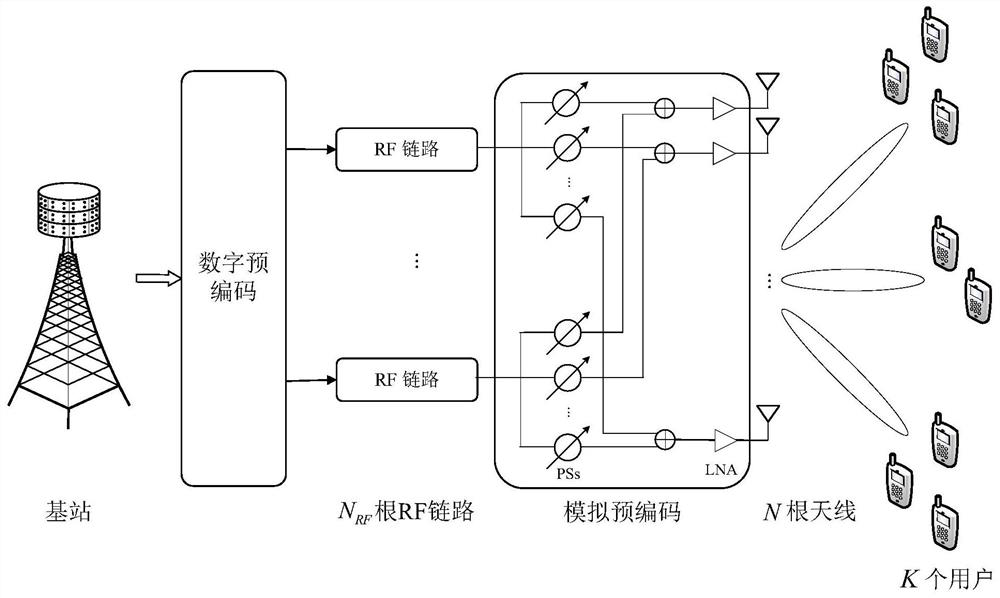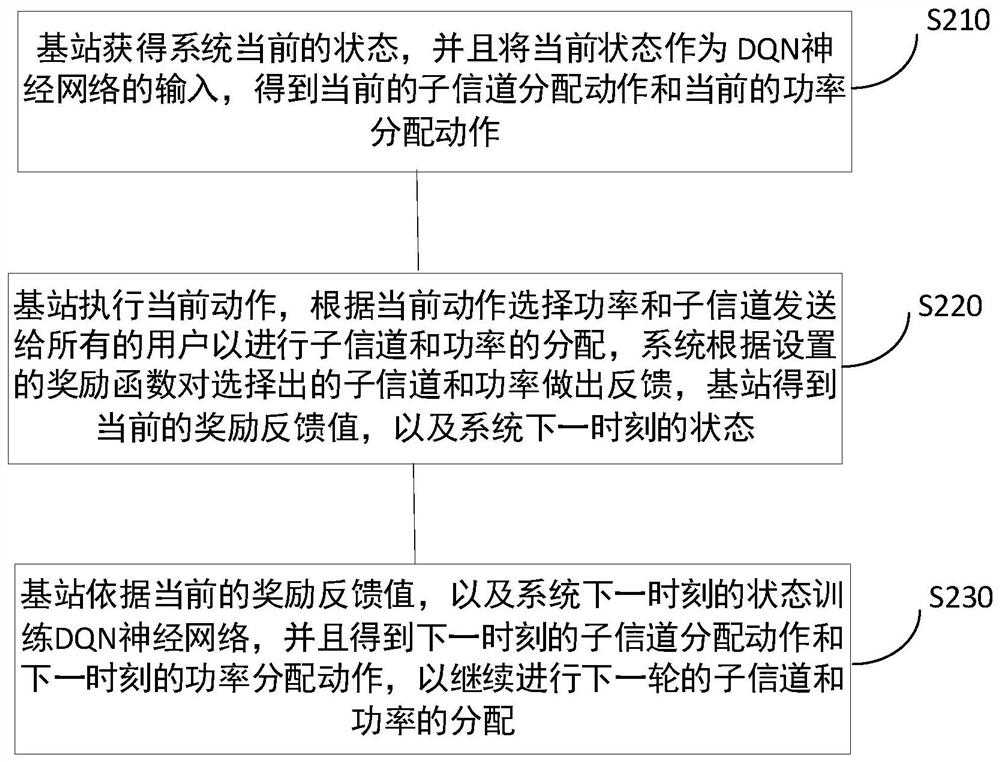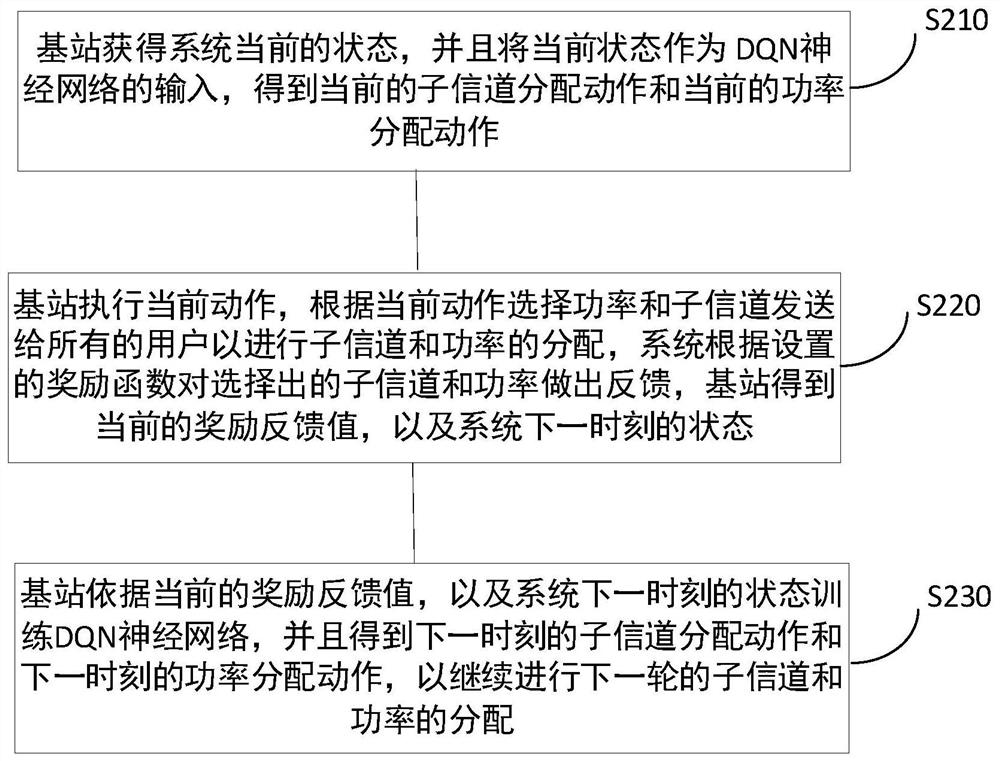Method and system for resource allocation of millimeter wave large-scale mimo-noma system
A technology of MIMO-NOMA and system resources, which is applied in the field of millimeter-wave large-scale MIMO-NOMA system resource allocation, and can solve problems such as limited wireless resources and resource system performance impact
- Summary
- Abstract
- Description
- Claims
- Application Information
AI Technical Summary
Problems solved by technology
Method used
Image
Examples
Embodiment 1
[0028] Such as figure 2 As shown, the present application provides a resource allocation method for a millimeter-wave massive MIMO-NOMA system, including the following steps:
[0029] Step S210, the base station obtains the current state s of the system t , and the current state s t As the input of the DQN neural network, the current sub-channel allocation action a is obtained t1 and the current power allocation action a t2 ;
[0030] The DQN neural network can obtain the best action to be taken according to the state of the current system, so as to ensure that the reachability and rate of the entire MIMO-NOMA system are maximized under the minimum data rate constraint of the user.
[0031] In order to achieve this goal, the state s of the system at the tth time slot t Defined as: s t ={SINR l,m,k (t)}, and s t ∈s, where s is the state space of the system, SINR l,m,k (t) is the SINR of the kth user in the mth group on the lth subchannel at the tth time slot. Among t...
Embodiment 2
[0052] Such as image 3 and Figure 4 , the application provides a millimeter wave massive MIMO-NOMA system resource allocation method, comprising the following steps:
[0053] Step S310, the base station obtains the current state s of the system t , and the current state s t As the input of DuelingDQN neural network and DDPG neural network, get the current sub-channel allocation action a t1 and the current power allocation action a t2 ;
[0054] The state s of the system at the tth time slot t defined as s t ={SINR l,m,k (t)}, and s t ∈s, where s is the state space of the system, SINR l,m,k (t) is the SINR of the kth user in the mth group on the lth subchannel at the tth time slot. Among them, the system state s t ={SINR l,m,k (t)} reflects the current channel quality SINR of the link, subchannel allocation factor x l,m,k (t) and the current power allocation factor P l,m,k (t).
[0055] The base station obtains the current state of the system s t , for the Due...
PUM
 Login to View More
Login to View More Abstract
Description
Claims
Application Information
 Login to View More
Login to View More - R&D
- Intellectual Property
- Life Sciences
- Materials
- Tech Scout
- Unparalleled Data Quality
- Higher Quality Content
- 60% Fewer Hallucinations
Browse by: Latest US Patents, China's latest patents, Technical Efficacy Thesaurus, Application Domain, Technology Topic, Popular Technical Reports.
© 2025 PatSnap. All rights reserved.Legal|Privacy policy|Modern Slavery Act Transparency Statement|Sitemap|About US| Contact US: help@patsnap.com



